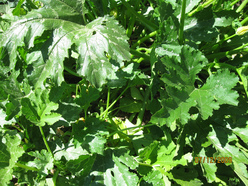 Plant protein is less abundant. There are several plant sources of protein but the only plant source of complete protein is soybean. That’s one of the reasons that it is such an important part of vegetarian and vegan diets, and one of the reasons that I recommend soy products be included as a dietary staple. Soybean is a very versatile plant food that can be eaten on its own (edamame), added as a healthy filler to other foods, or used to make soy milk, tempeh, and tofu (which is made by boiling soy milk). Tofu can be soft and delicate or firm and sturdy, and it tends to take on the flavor of whatever it is cooked with, enabling it to be used in a wide variety of ways including as a substitute for meats of various kinds. Other sources of plant-based protein (which are not complete proteins) include: beans, nuts, lentils, hemp, chia, seeds, quinoa, and spirulina. But not all plants are necessarily healthy foods, even if they do contain protein. As you will read later, a lot of today’s GMO plants are very high in carbohydrates, and CDFs, as stated above, make blood sugar levels soar. Keeping our blood sugar levels relatively stable may be the single most important of the nine Rules of Healthy Eating. We should try to limit carbohydrate intake to about 15g per meal. More about this later, but as in illustration, one cup of quinoa contains 24g of protein but a whopping 109g of carbohydrate! Compare this to a cup of leafy greens like spinach which provides about 1g of carbs. READ ON: Is Soy Healthy?
1 Comment
4/6/2023 01:58:51 am
PLNT protein founders researched, sourced and gathered (not hunted), milled and blended, multiple combinations of plant protein to get a high concentration of plant protein
Reply
Leave a Reply. |
AuthorArchives
August 2021
Categories
All
|


 RSS Feed
RSS Feed